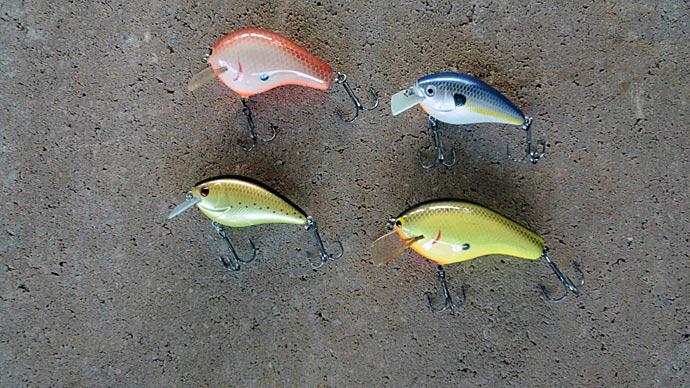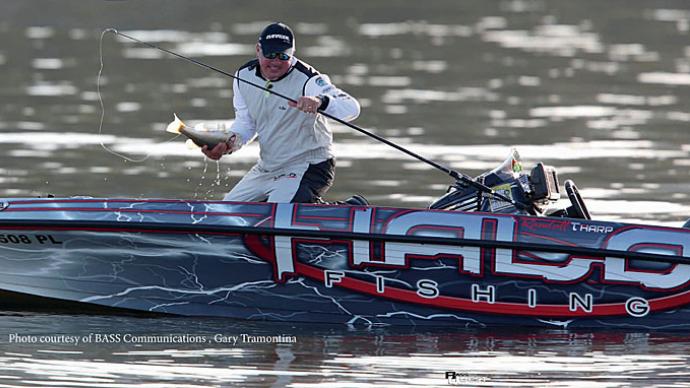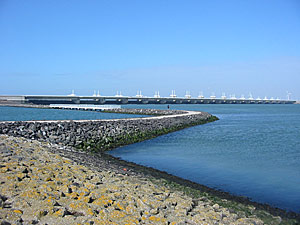
Riprap is a universal form of cover for bass. No matter whether you are bass fishing natural lakes of the upper Midwest, highland reservoirs of the Ozarks, or muddy, tidal waters of the gulf coast –more than likely you will encounter riprap. Riprap is extremely common because it is used to mark borders of man made lakes and to fortify structure of natural lakes.
Riprap is used to armor banks against wave erosion. It’s also one of the all-time best places when it comes to locating bass no matter what time of year it is. As tides roll in and out, riprap can be one of the best places in a lake to find baitfish. These rocks make an ideal hiding spot for baitfish which results in bass lining up to hit the buffet.
The differences of how an average weekend angler and a top pro fishes a riprap bank is staggering. Everything from bait selection, angle of cast, and time of day can affect the quantity and quality of bass caught on riprap banks.
Here are 10 of the top tips on how to catch more bass on riprap banks.
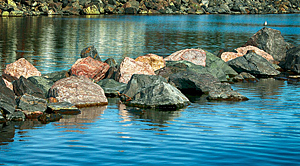
1. Fish the right direction
This is more pertinent if there’s current, but either way – bass holding on riprap will always face one specific direction. Bass will face the into the current. If the specific lake has no obvious current – the bass will likely hold with nose into the prevailing wind. In order to maximize your catch, make sure you’re fishing upstream into the current, so your bait comes back with the current – and right into the bass’ faces. It may be harder to control your boat, and drain your batteries quicker, but by fishing into the current – you’ll catch so many more fish that it won’t matter.
2. Get some deflection
We get it; it’s scary to fish those new and expensive lures along what appears to be a wall of jagged rock. However, you need to be actually contacting the rocks to get the most bites. Bass on riprap hang in the little gaps and cracks in the rocks – and dart out when something jumps into their view. By deflecting off the rocks, whether with a hard bait, plastic, or jig – you’re showing them a natural feeding situation, and doing so will fool twice as many bass as someone not contacting the rocks.
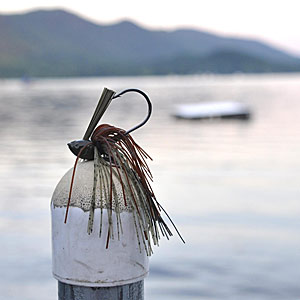
3. Use a jig
Although crankbaits, spinnerbaits, and other moving baits are deadly when bass fishing riprap, the ultimate tool for effectively fishing riprap is a jig. Jigs emulate crawfish, which make up much of the riprap bass’ diet. Jigs can also be fished on the shallow parts, as well as the deep parts of the bank, which makes them more efficient than other presentations. A ½ ounce casting model, in brown or green with a crawfish trailer is a great place to start. Absolutely make a couple passes with a moving bait, but before you leave any riprap, make sure to throw a jig at unique spots on the bank, like points, wood, or rock slides.
4. Be thorough
Because the bass are hiding behind the rocks, they are not going to see everything as it floats overhead. For that reason, it’s important to be extremely thorough when riprap fishing. If you watch some of the best in the business, it sometimes looks like they’re a CD set on repeat, making repetitive casts to the same place. They do this for a reason though – every time you cast, your bait will take a slightly different route through the rocks – and it may take a couple tries for a lunker to finally see it.
5. Come back again
Like making multiple casts, if you’re focusing on riprap it’s important to fish each location multiple times. Bass move up and down on riprap banks – moving up when actively feeding, and back down to rest. Don’t be afraid to re-fish a stretch of riprap that you already fished once in a day, there’s a great chance that more or different fish have moved up to feed.
6. Focus on changes
As mentioned when fishing with a jig, the most productive stretches on a riprap bank are always going to correlate to changes, or subtle differences. The corners of a bridge, a laydown tree along the bank, or even a spot where the slope changes from 3 to 1 to a flatter grade. Rock size changes can also be triggers. The bottom line is that when you see something different, fish it.
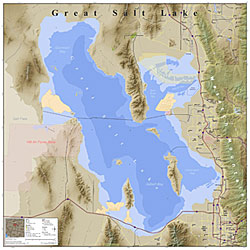
7. Study your maps
Map study is also key to locating good stretches of riprap. Look for areas that are likely to hold current, funnel baitfish, or offer bass an efficient travel route. Offshore structure can also be productive – like when a river channel on a reservoir backs up against a riprap bank, or when an offshore hump or point comes close to the rocks. These are all travel corridors, and they will hold more bass than other, more mundane stretches. A few minutes of map study can pay dividends.
8. Hit Them Hard In The Fall and Spring
Fish migrate from lakes into rivers and creeks or shallows in the fall, and back out after the spawn. This is a prime time to target them. Find riprap under or along bridges, where these moving fish are narrowed down to a smaller channel. The riprap along the bridge structures is a hot spot for fish looking for a quick snack on their road trip. Fish a shad colored trailer behind a jig and work all areas of this structure. The bridge will hold more fish than you think this time of year.
9. Fish Floods
When the water is high (and dark), bass head for walls. Much like a human waking up in the middle of the night that touches the wall on the way to the kitchen, bass head for familiar structure as they struggle to identify where they are in the lake. When the water gets murky and raised after a storm, fish riprap relentlessly as the banks will be loaded with fish. Which bait works best here? Well that brings us to our final tip.
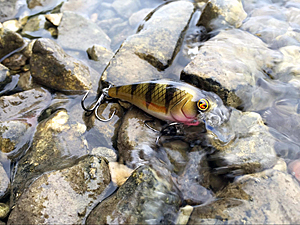
10. Bump Cover With Your Squarebill
Take a shallow running squarebill, cast right along the wall of riprap, and bang that baby into every rock you can on the way back. A durable squarebill can make all the difference when fishing riprap. These lures excel in shallow water when bumping structure. Fish a squarebill along rocks with periodic pauses to allow for strikes. You will be filling the boat in no time.
Riprap is one of the most underutilized structures in all of fishing, and it is mostly because anglers simply do not know how to fish it. With a squarebill in murky water, pitching with a jig, or under a bridge, riprap is always playing host to bass. Fish these manmade structures thoroughly, and don’t be afraid to come back to the same place twice! These strategically placed stones may feel like just another border marker in the lake, but when fished correctly, they can be your new honeyhole.



